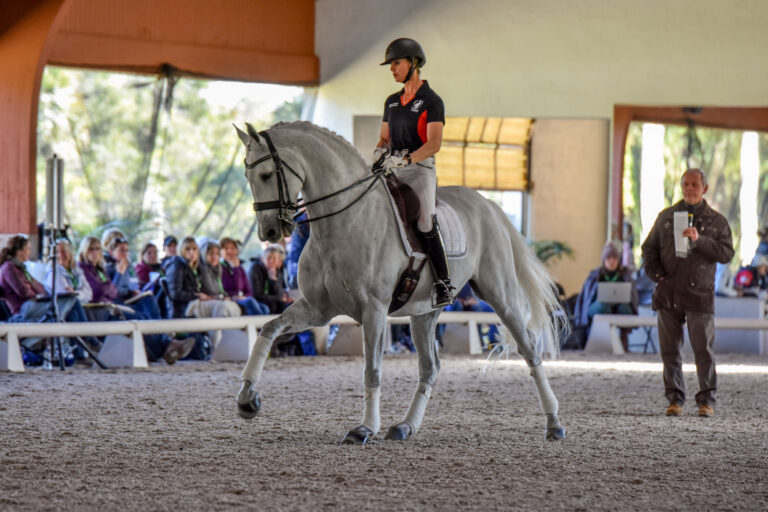Winter in a cold environment, such as the Great Plains of North America, separates the men from the boys, or should I say the dressage riders from the girls (as well as boys). I live near Oakville, Manitoba Canada about 66 miles (106 kilometers), north of the North Dakota border. Riding has been a lifelong passion, but for the last 30 years, I have focused on dressage. Having read an article regarding grooming in winter posted on the Dressage Today Facebook page, I felt compelled to write about grooming in a “real” winter setting, not the extra light winter discussed in that post.
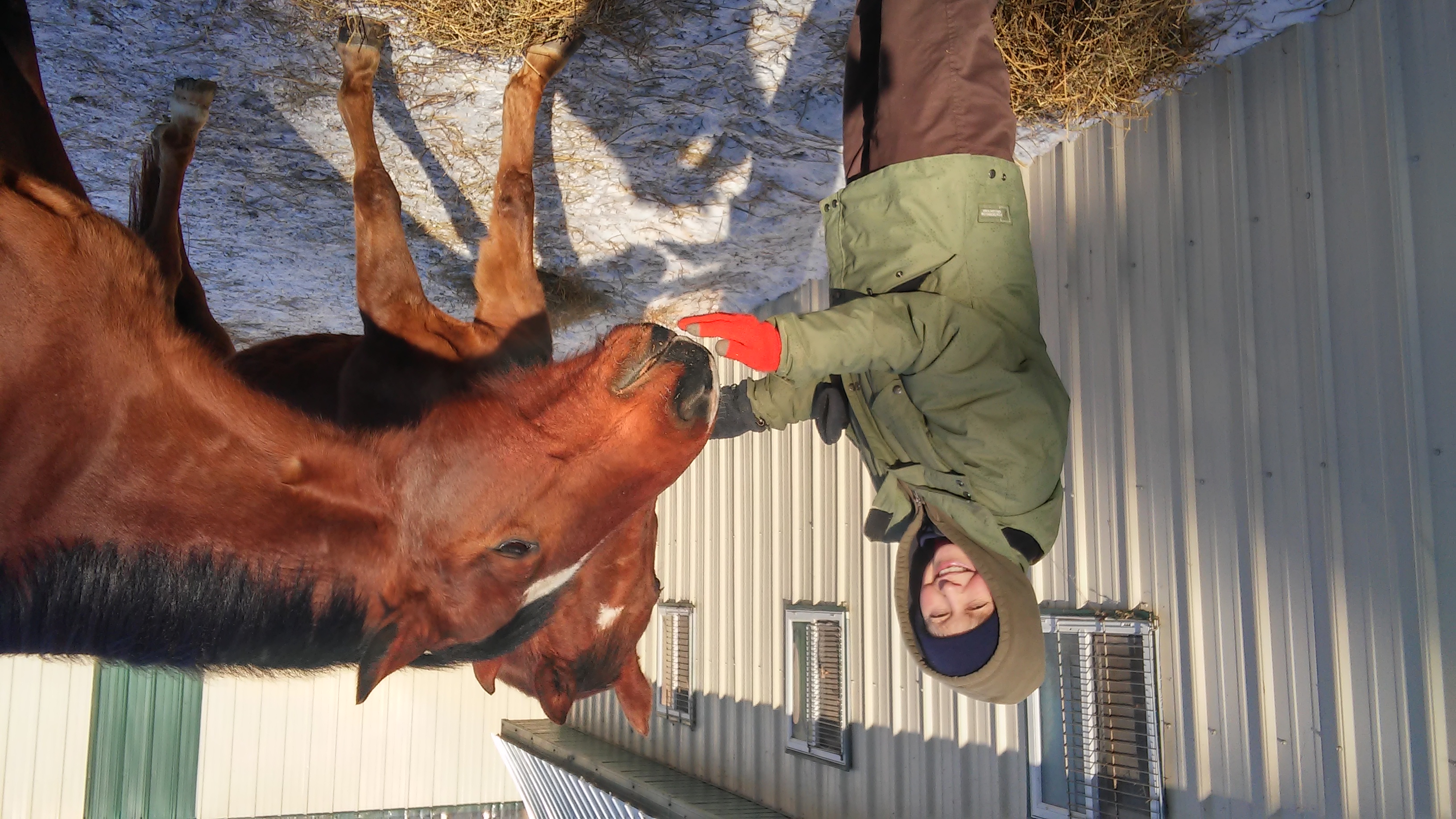
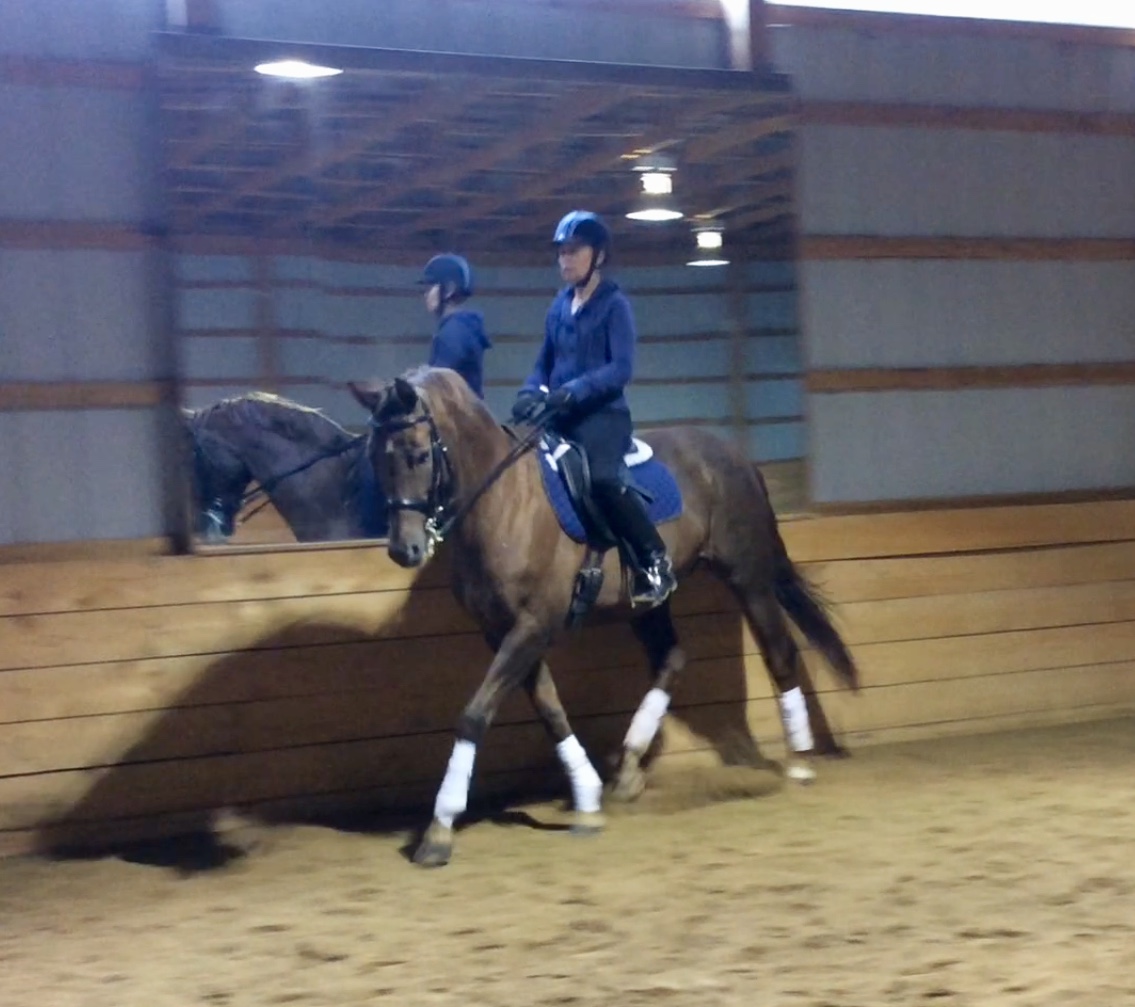
Temperatures here vary from about -3 degrees Celsius (26 degrees Fahrenheit) to -35 degrees Celsius (-31 degrees Fahrenheit), without wind chill as a factor. Not only is riding a chilling experience, but grooming can be worse. While riding your horse, you are an athlete working hard, physically and mentally, to improve your dressage skills. It is an extraordinary cardio workout and produces great internal heat. But grooming in a cold environment lacks this heat production. Yet dressage riders, or grooms, who lack heated barns, somehow manage to prepare their mounts before riding in temperatures well below freezing.
I try to groom regularly, even when the temperatures preclude riding. If the thermometer shows a temperature of -20 degrees Celsius (-4 degrees Fahrenheit) or below, I usually do not ride. But giving my horse a good grooming in the barn is beneficial for both of us. Winter can be hazardous considering the ice and deep snow in corrals or pastures, so grooming will alert you to any cuts, scrapes or swellings that occur. Even if you can’t ride afterwards, it will help maintain your horse’s coat and provide some quality time with your equine partner.
Before I head out to groom my horse, I always think carefully about my apparel. Layering is very important. I sometimes wear two touques (knitted hats), two turtleneck sweaters, a vest, a heavy hooded jacket, a winter jacket, leggings, pants or riding breeches and ski pants, when it is the coldest. If I’m lucky and the temperatures are hovering around -10 degrees Celsius (14 degrees Fahrenheit), I wear only one sweater and perhaps shed one of the jackets and touques while grooming inside; also, my ski pants aren’t necessary on these days when I go to ride. A warm scarf might also be needed if I am working outside.
Keeping my hands from freezing again requires layering. Single layer knitted gloves need to be worn inside a pair of mitts, so the mitts can be taken off, if my grooming requires more dexterity than my mitts allow. If I’m riding after I groom, I put my winter riding gloves inside my winter jacket to keep warm, till we’re all tacked up and ready to ride. Until I found microwavable bit warmers, I used to wear my bridle inside my jacket to keep the bits warm till I bridled my horse. That also kept the leather more pliable, but was far from comfortable, especially when I used my double bridle! Air-activated hand warmers can be put in mitts, but I did not have a lot of luck with them. They seemed very awkward to me and never lasted as long as advertised. But, I know that some people use them.
I find footwear to be a personal choice; winter riding boots or my slightly oversized winter hiking boots are my choices. The boots must have lots of toe room, in case I need to wear extra socks. I have tried battery-operated socks, but they were too bulky to fit my riding boots. Air-activated hand warmers can be put in boots, although again they didn’t fit comfortably in my boots.
After putting on all these layers from head to toe, I might move like a Frankenstein monster, but at least I won ‘t freeze!
On a warm winter day, I sometimes groom outside, so that my horse and I can enjoy the sunshine while he eats his hay. But, more often, I do my grooming in the barn. I usually groom in the aisle in the summer, but I like to groom in my horse’s stall in winter. It is warmer there, just from his body heat. Also, in the stall, my feet are on straw or shavings, which create less chill than walking on cement or rubber mats.
Adding to the regular roster of grooming tools (curry comb, body brush, mane and tail comb etc.), I like to use a bucket of clean snow to enhance your horse’s coat and tail. With the extreme cold, our snow is very light and dry compared to places with a warmer and more humid winter climate. The snow acts somewhat like the grooming sprays or wipes , that I use in the summer. Spray bottles freeze up and do not work well in winter. Also, if it has snowed before your horses come into the barn, they will have a lovely coating of snow for you to groom. Otherwise, I put handfuls of snow from my pail along my horse’s neck and back before using my curry comb. Rubbing snow into his tail, helps to clean and remove tangles really well. Cold weather is very trying, so having snow for grooming is one of the perks of winter!
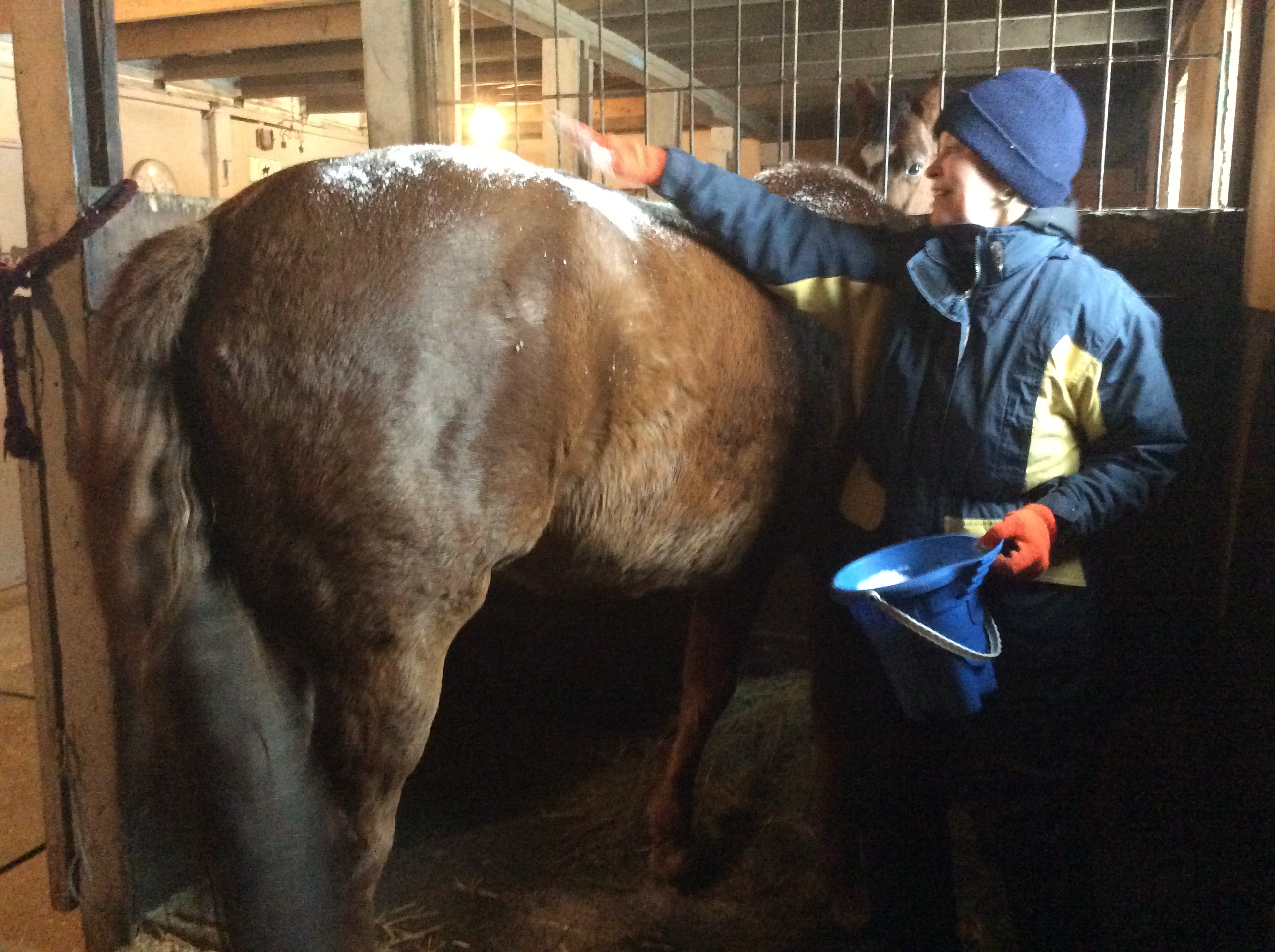
Caring for horses’ hooves is most critical in winter. When outside, horses can develop balls of ice beneath their feet, particularly if they are shod. Putting pads which pop out the snow is very helpful in preventing this. I did try putting oil or Vaseline on the bottom of our horses’ feet before they went outside, but this didn’t prevent snow build up. To remove ice balls or packed ice from my horses’ hooves, I use a claw hammer to gently tap on the ice till it breaks off the bottom of the hoof. This has never bothered or damaged any of my horses’ feet. If the weather outside isn’t extreme, I try to tap out the snow with my hammer’s claw before they enter the barn. This prevents any skidding in the aisle, particularly when they are turning to enter their stalls. Other than removing the ice, I usually leave picking out their hooves with my hoof pick, until my horses have been in their stalls for a while. Then, any dirt or manure under the snow and ice, has softened while they stand in the straw or shavings, so you can clean them as usual with a hoof pick.
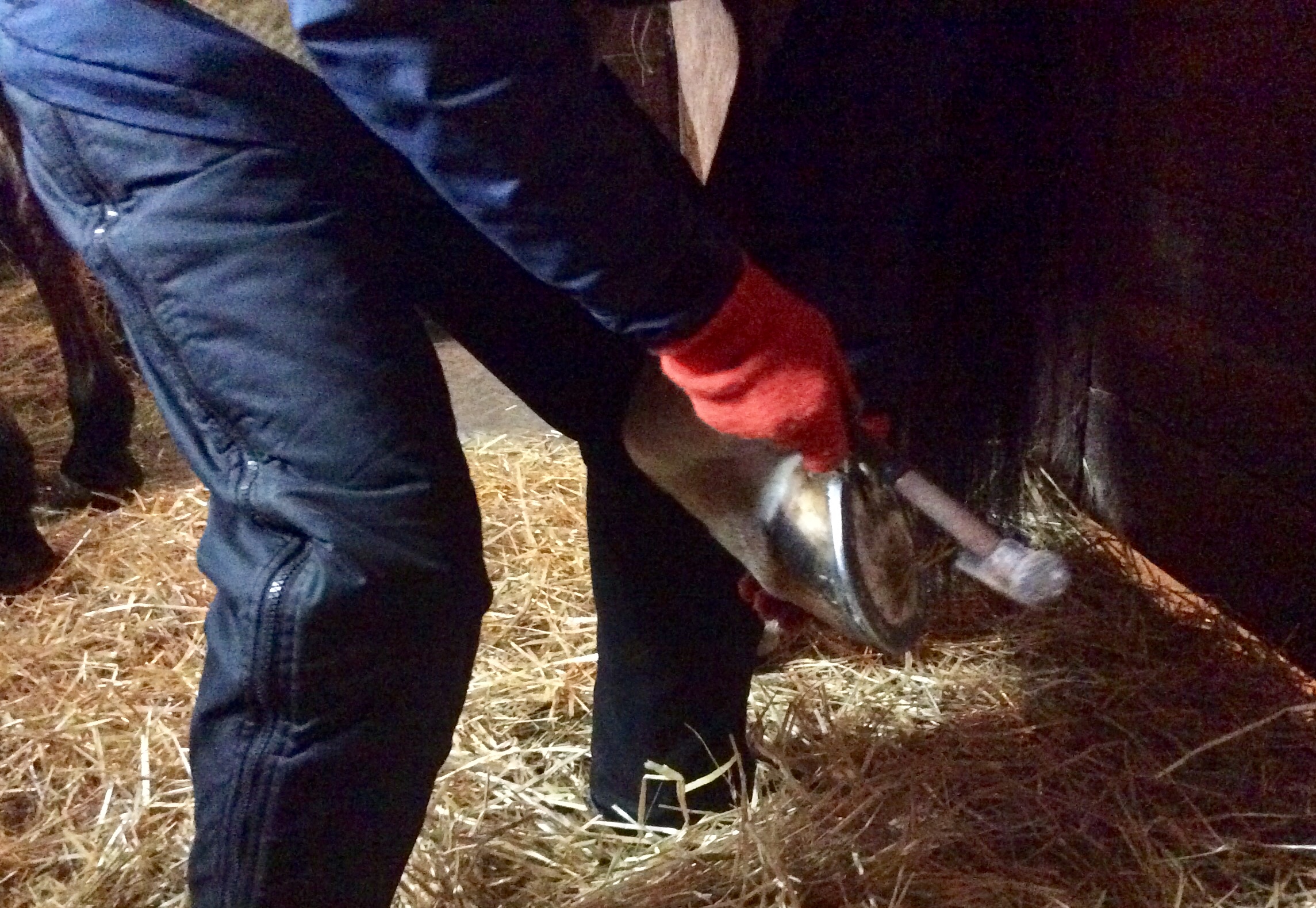
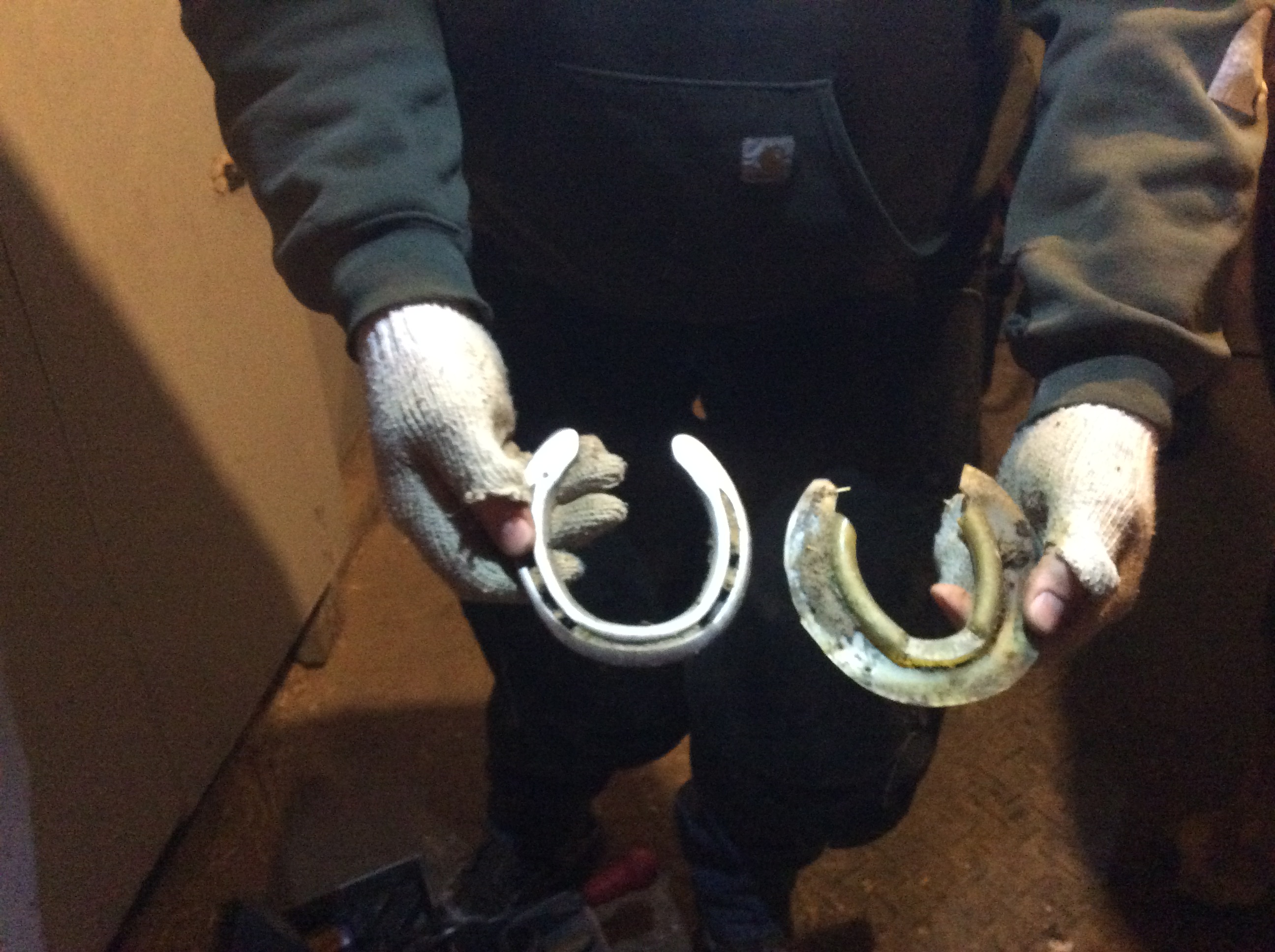
In terms of blanketing, I usually do not blanket unless the weather is extremely cold and perhaps windy, or I have a new horse who is accustomed to being blanketed. My riding arena is not heated, nor is my barn, so it is necessary for my horse to have an effective winter coat. If the weather is extreme outside though, I most often just return them to their box stalls. I have discussed this to show why my horses grow long winter coats, which have adjusted according to the colder temperatures and shorter days.
These lengthier, thicker coats are not as pretty as our horses’ summer coats, but we do not compete in winter, so a short, sleek coat is not required. But the thicker coats present special grooming issues. I avoid grooming their coats too intensely, as this removes the natural oils in their coats. These oils keep the horses warmer by helping shed snow and water. So, as mentioned, I sprinkle clean snow on my horse’s back and neck before lightly grooming it off with my curry comb and body brush. On places where his coat may be matted with dirt, such as his belly, thighs, knees and hocks, I rub snow on these spots several times and then use a dog grooming comb with rotating teeth to loosen the mats. After this, I use my curry comb and more snow, to further brush out the matted hair.
Because warmth is such a key concern, I do not body clip in winter. I use my scissors or my ear trimming clippers, to remove enough hair from our horses’ lower legs, so that wraps or sport boots still fit well. I treat their bridle paths in the same manner, trimming just enough so that bridles fit. As my current partner, a Dutch Warmblood /Thoroughbred gelding, foams at the mouth effusively when I ride, I trim about half the length of his whiskers in winter. Otherwise, the whiskers increase the frozen foam and icicles which form around his muzzle when I ride. He hates this build up, and I usually hop off several times during each winter ride to wipe away the foam.
Finally, I’ll talk about sprucing up manes and tails in winter. I trim or pull my horse’s mane to keep it neat, but leave it a bit longer to help shed the snow. His tail is rubbed frequently with snow, and brushed and combed as in the summer. But, I do not trim the top of the tail as I do in summer for shows; I might snip a bit at the top of the tail, just to keep it neat. I bang the bottom his tail slightly shorter than in summer, so that it doesn’t drag in the snow when he is outside.
Winter grooming in weather that rivals the North Pole at times, and I mean that literally, requires determination and many modifications from your summer grooming procedures. In summary, here are my best tips:
• Continue to groom regularly, even though you might not always be able to ride.
• It’s imperative to wear layers of clothing from head to toe, adjusting the layers according to the temperature.
• Groom in your horse’s stall to help you stay warm.
• A claw hammer can be used to tap and remove ice or snowballs from your horse’s hooves; if possible, allow your horse’s hooves to warm up inside before using your hoof pick.
• If your horse is shod, popper pads will prevent ice and snowballs forming when your horse is outside.
• Do not over groom your horse with your currycomb and body brush, as this will remove important oil from their coats.
• A bucket of snow for grooming coats and tails is one of the few advantages of grooming in a frigid climate!
• Clip minimally. For your horse’s bridle path and lower legs, snip with scissors or lightly with an ear trimmer, just so that the horse’s equipment fits.
Winter grooming of my dressage horses is a far cry from my summer routine, but has been gratifying and effective for both my horses and myself. So, get out there and groom. Don’t let some of Mother Nature’s coldest weather conditions prevent you from maintaining your horse’s coat , feet, mane and tail.
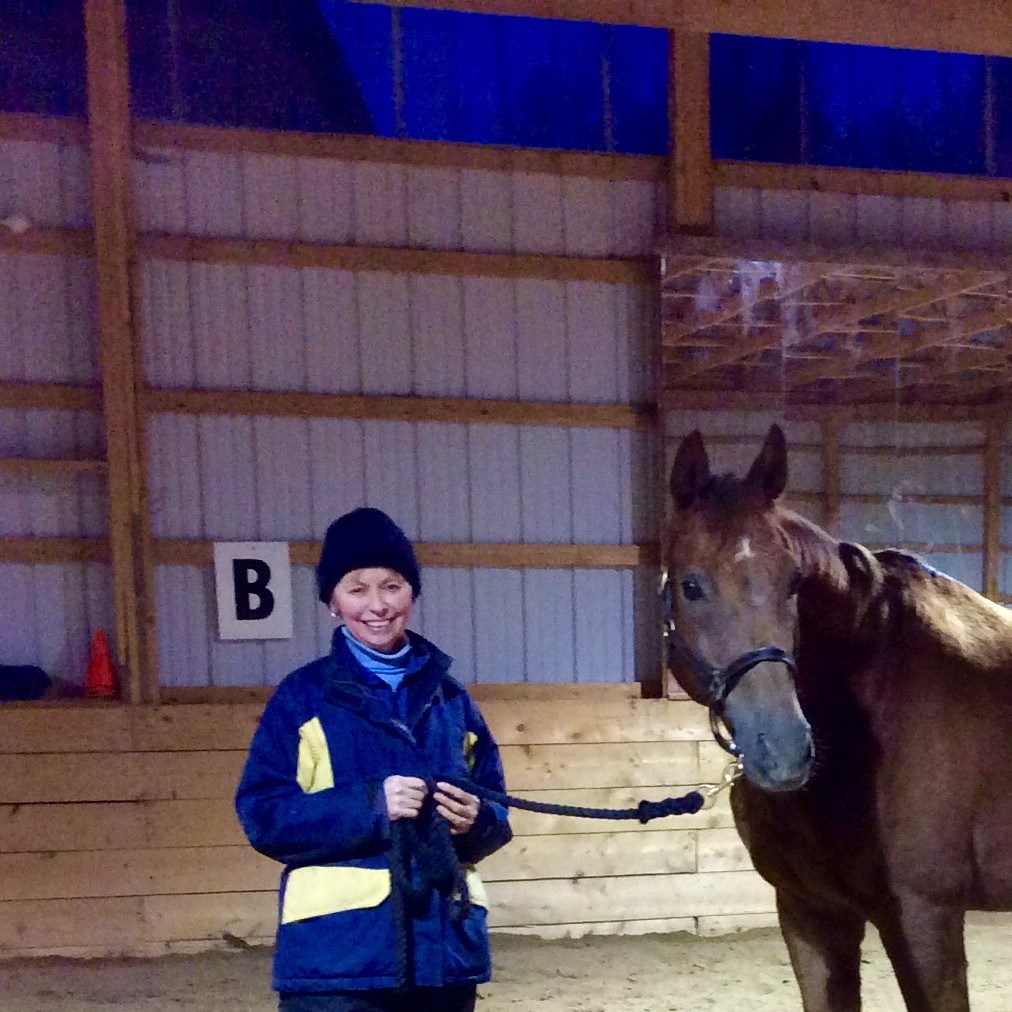
Merelyn Hunkin is a retired teacher living on acreage near Oakville, Manitoba, Canada. She has been involved with dressage for almost 30 years and has been provincial champion many times at various levels of dressage.




